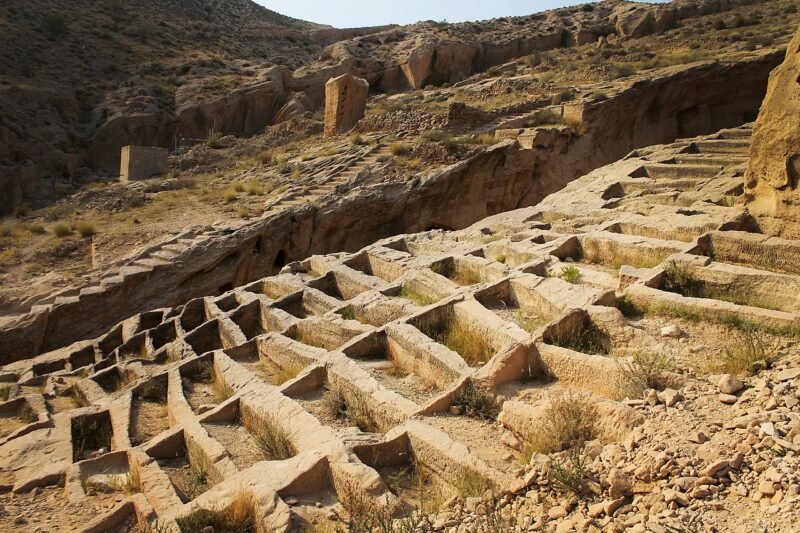Siraf rock cemetery: a gateway to Iran’s history and culture
Siraf rock cemetery, located in Bushehr province and in the vicinity of Kangan port, as one of the unique and important tourist attractions of Iran, displays a valuable treasure of the history and culture of this land. The history of this cemetery, which dates back to the Sassanid era and the beginning of Islam, along with the variety and number of graves, ancient monuments and natural landscapes, has made it an attractive destination for domestic and foreign tourists.
Outstanding properties:
Variety and number of graves: Siraf rock cemetery includes a wide variety of graves in different shapes and sizes. Among these graves, we can mention rectangular graves, tombs, tall stone towers and water wells, each of which represents its own customs and culture in different historical periods.
Antiquities: The existence of the fire temple, church, and studan next to the graves shows the religious and cultural diversity of the people living in this area throughout history and presents the Siraf rock cemetery as a natural museum.
Natural views: The elevated location of the cemetery has brought unique and beautiful views of the plain, mountains and sea and has added to its attractiveness.
Untold secrets:
The secret of carving graves in the rocks: the motivation and reason for carving graves in the heart of the rocks is still not completely clear. Some believe that this was done to prevent soil pollution or because of the lack of land to bury the dead.
Use of water wells: The exact use of water wells in the Siraf rock cemetery is not fully known. Some believe that these wells were used to store drinking water or to perform religious ceremonies.


